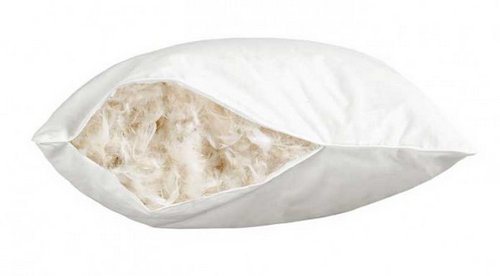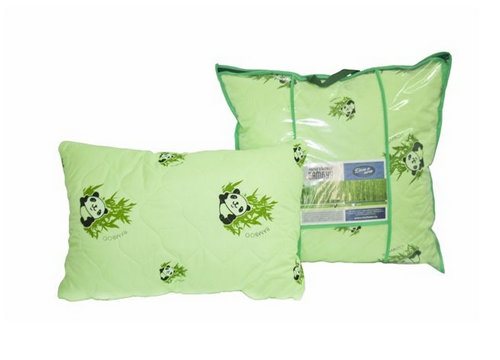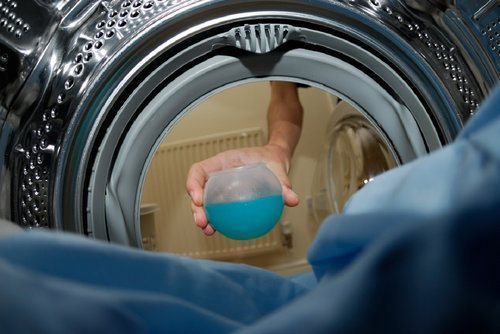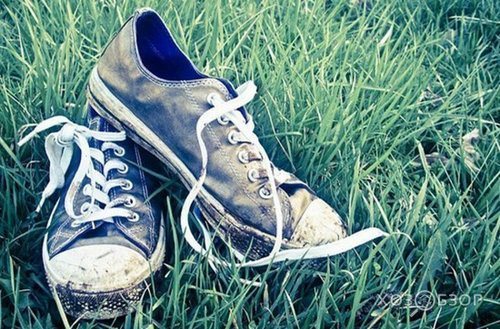In the time of our mothers, down pillows were considered an ideal option, because there were no high-quality synthetic fillers then. And every housewife knew how to wash a down pillow at home.

Today it is much easier to take such products to the laundry, since cleaning them yourself is considered a complex and time-consuming procedure. However, it is quite possible to cope with it if you familiarize yourself with a few rules.
Why do you need to wash pillows?
Even with frequent cleaning, it is impossible to achieve sterility of the room. This means that dust mites, which are one of the main culprits of allergies, appear in down pillows over time. To get rid of them, the filler needs to be cleaned. Each material has its own washing frequency. It is recommended to wash down pillows at least twice a year. Although some allergists believe that this can be done more often - for example, every quarter. It is, of course, better to choose warm and sunny days so that the down dries faster. In addition, sun drying replaces ultraviolet treatment, which is used in dry cleaners and laundries. In winter, you can speed up the drying of the pillow using a hairdryer by turning on hot air.
How to wash a small pillow?
For small items, machine wash is also suitable. However, this process requires a serious approach. So, first you need to remove the pillowcase and carefully inspect the pillow so that there are no holes throughout it or tears along the seams.If such defects are found, they will need to be carefully sewn up. The pillow can only be washed on the delicate cycle. And under no circumstances should you use the spin function, as this will damage the product. The pillow should be washed with regular washing powder, without stain removers or bleaches that could ruin the fabric.
When washing, it is very important to approach the drying process correctly. In this case, the pillow should be placed on a flat surface, preferably on a balcony, to provide access to fresh air. During drying, the product will need to be shaken regularly to prevent fluff and feathers from becoming clumps. It is better to dry in the fresh air, in good weather. And this process takes on average one or even two days. But sometimes it stretches out for several more days, and there is no need to rush through it. After all, if you do not dry the pillow completely, a damp smell will appear. Even worse, it opens the door for mold to grow. When the pillow is dry, fluff it up and then put a clean pillowcase back on it.
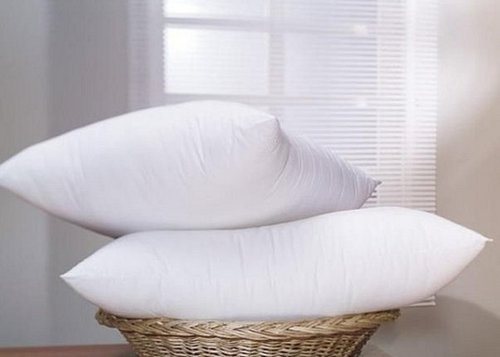
Machine washable large pillow
It is important to note that when machine washing a large pillow, the pillowcase will have to be changed, since it first needs to be ripped apart. In this case, you will need a special mesh case with a zipper, with very small cells. You will need to put fluff from the pillow into it. The algorithm of actions will be as follows:
- you need to put the fluff in a bag and put it in the washing machine (if there is still too much of it, then this amount is divided into several parts, put in different bags and washed in turn),
- add washing powder (you can use the one intended for woolen items),
- select the delicate wash mode and double rinse, while it is not recommended to run the spin function; in extreme cases, a minimum (up to 400) number of revolutions is allowed.
Experienced housewives recommend putting a couple of tennis balls in the tank of the machine, which will prevent the fluff from sticking together during the washing process.
Drying occurs according to the principles described above. Drying the product on the radiator is not recommended.
Hand wash down pillows
When washing by hand, it is very important to wash the fluff so that it does not stick together in one big lump. To do this, you need to not only wash it, but also rinse it very thoroughly. This can be done either in a large basin or in a bathtub, after first filling the container with a solution of washing powder. The detergent is diluted in water, the optimal temperature of which is 30-40 degrees, no more.
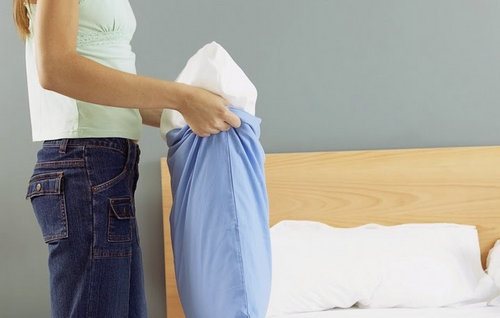
The napkin must be ripped open carefully, and the fluff must be immediately transferred to a basin or bath with water. In this case, it is necessary that the fluff floats freely in it. If there is not enough space in one basin for this, you will have to take several containers. The fluff is soaked in soapy water for about two hours. Then it is drained, and the fluff is washed in running water, placing it in a colander. After the first soaking, only surface dirt is washed off. Therefore, after rinsing, the fluff is again placed in the soap solution. This time you can properly wrinkle it with your hands and wash it. Then the fluff is washed again with running water, lightly wrung out and dried.
How to wash an old down pillow?
Although it is recommended to change pillows quite often, it is very difficult to part with your favorite, and, most importantly, comfortable things. But washing old down pillows is quite difficult, since the risk of damaging the filling increases significantly.In this case, machine wash is not used. All work will have to be done manually.
At the same time, for down you also need to immediately prepare either several nets with small cells, or tulle bags (in this case, they are sewn up along the edge so that the filling does not fall out). The pillow can be washed in a large basin or in a bathtub.
It is very important to make the cleaning solution correctly. A popular recipe is based on laundry soap, which is first grated and then mixed with ammonia. The proportion is as follows: for five liters of water you need to take 150 g of soap and a teaspoon of alcohol. The bags of fluff need to be immersed in this solution. At the same time, they are not washed, just rinsed carefully. After this, they are removed from the washing solution and rinsed in clean water. There is no need to squeeze them. The water should drain on its own. When drying, bags with filler are shaken regularly. When they are completely dry, the fluff is poured into a new napkin, which is sewn up with strong thread.

Useful tips
If you do not have a suitable mesh for washing pillows, you can make the covers yourself. However, gauze is not suitable for such purposes, since feathers and fluff will get tangled in its fibers. It is better to take old tulle for this. When sewing, you need to choose the width of the cover so that it matches the width of the bedspread. But the length of the bag should be twice as long. This will help you complete the task more effectively. After all, a rectangular cover is easier to lay out to dry. This allows you to be more careful with the filler. It is recommended to sew the covers so that they do not come undone during the washing process.
How to refresh a down pillow without washing?
What to do if the housewife does not have the opportunity to wash the pillow? To “refresh” the product and get rid of microorganisms living in the fluff, it can be treated with steam. You need to hang the pillow in a vertical position, then go over each side with a steamer. After this, the product is placed on a flat horizontal surface, the fluff is distributed evenly throughout its entire volume, thoroughly dried and a clean pillowcase is put on. Of course, when carrying out this procedure, you need to carefully inspect the bedstead, and if there are small holes somewhere, then mend them.



